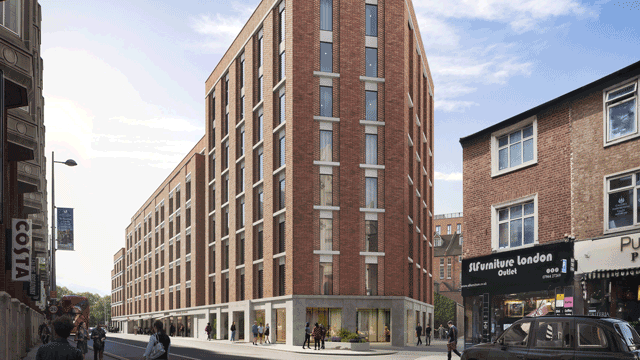Industry leaders have slated the government’s planning reform for ignoring commercial property while still calling on the sector to foot the bill for the overhaul.
The proposals have been heralded by prime minister Boris Johnson as a “radical reform unlike anything we have seen since the Second World War”.
However, the British Property Federation has flagged concerns that the 80-page consultation does not include a single reference to “commercial property” and how the sector will handle major changes to developer contributions.
“Jobs are the bedrock of sustainable communities and therefore employment land is as integral to communities as land for homes,” said the BPF.
Ian Fletcher, head of policy at the BPF, told EG that having a planning regime that is supportive of commercial development will be crucial to the nation’s economy and recovery.
The industry body’s formal response to the paper points out that logistics and offices in particular need strategic employment land and better planning for infrastructure. It added that automatic outline approval would be “unhelpful” for large strategic mixed-use schemes which are informed by community engagement.
It also said that while the development sector should contribute significantly towards funding the planning system, it would be “unreasonable” to suggest that developers alone should fund the system.
The proposals seek to replace developer levies with a single payment based on the value of the development, paid to local authorities on completion.
But the BPF pointed out that paying a levy at the end of development raises challenges around trigger points and valuations, and warned this could hamper any ability to deliver infrastructure on time, which is “imperative” for large schemes.
“The infrastructure funding is the most challenging part and probably the most radical,” said Fletcher. He said removal of viability checks threatens to prevent development. “You really have to get that levy right, as the consequences could be quite severe.”
Fletcher added that while the BPF has welcomed the government’s moves to engage after publication, there is still a lot to work through.
“There are a lot more questions than answers at this stage. How will this work for commercial property? People are craving more detail,” he said.
This lack of detail has prompted the likes of the Town and Country Planning Association to invite both the private sector and commercial real estate leaders to collaborate on alternative reform.
“There has never been a planning reform [such as this] that lacks any process, evidence or coherence in 30 years,” said Hugh Ellis, director of policy at the Town and Country Planning Association. “Lots of people with expertise and knowledge on planning reform were locked out of the white paper.
“None of us have an interest in smashing up what is left of the existing system… what if we were to all agree a few things that we could all coalesce around? An increased focus, not on delivery, but detail, expertise, knowledge and evidence to fix the problems, rather than this ideological nonsense.”
Tony Mulhall, associate director for planning and development at RICS, said: “A big part of the motivation is to deliver more housing, that has been the big shortcoming. Nobody has been screaming to say we need more offices. The market seems to respond and deliver offices, but the market doesn’t seem to respond and deliver enough housing at prices that are affordable.
“Business centres can’t be ignored. They are huge employers and business rates are a huge source of revenue for government.”
To send feedback, e-mail emma.rosser@egi.co.uk or tweet @EmmaARosser or @estatesgazette











